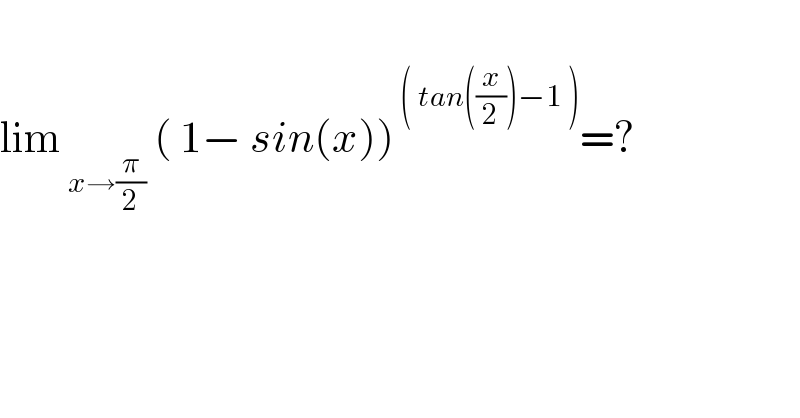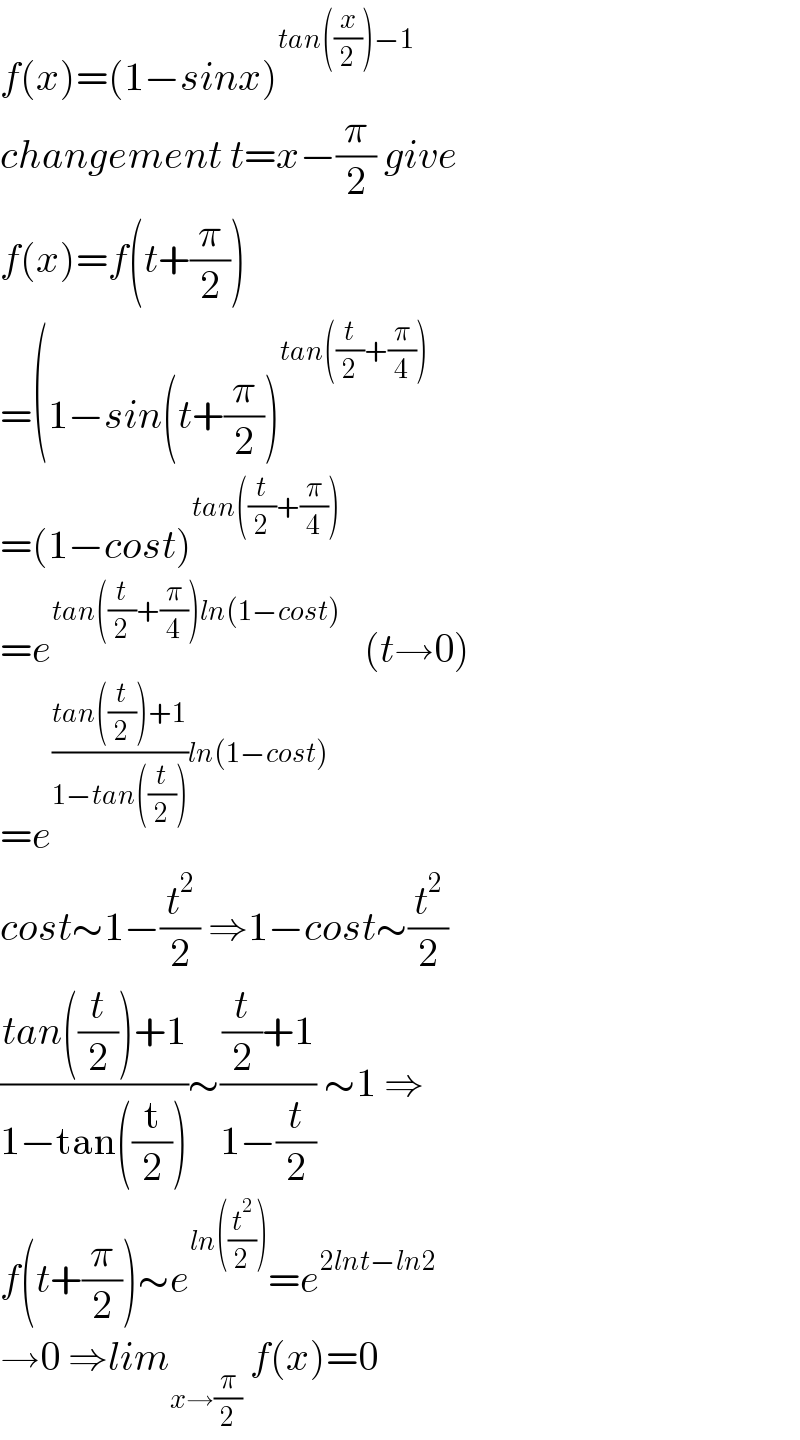
Question Number 162301 by mnjuly1970 last updated on 28/Dec/21

$$\: \\ $$$$\mathrm{lim}\:_{{x}\rightarrow\frac{\pi}{\mathrm{2}}} \:\left(\:\mathrm{1}−\:{sin}\left({x}\right)\right)^{\:\left(\:{tan}\left(\frac{{x}}{\mathrm{2}}\right)−\mathrm{1}\:\right)} =? \\ $$$$ \\ $$
Answered by Mathspace last updated on 28/Dec/21

$${f}\left({x}\right)=\left(\mathrm{1}−{sinx}\right)^{{tan}\left(\frac{{x}}{\mathrm{2}}\right)−\mathrm{1}} \\ $$$${changement}\:{t}={x}−\frac{\pi}{\mathrm{2}}\:{give} \\ $$$${f}\left({x}\right)={f}\left({t}+\frac{\pi}{\mathrm{2}}\right) \\ $$$$=\left(\mathrm{1}−{sin}\left({t}+\frac{\pi}{\mathrm{2}}\right)^{{tan}\left(\frac{{t}}{\mathrm{2}}+\frac{\pi}{\mathrm{4}}\right)} \right. \\ $$$$=\left(\mathrm{1}−{cost}\right)^{{tan}\left(\frac{{t}}{\mathrm{2}}+\frac{\pi}{\mathrm{4}}\right)} \\ $$$$={e}^{{tan}\left(\frac{{t}}{\mathrm{2}}+\frac{\pi}{\mathrm{4}}\right){ln}\left(\mathrm{1}−{cost}\right)} \:\:\:\left({t}\rightarrow\mathrm{0}\right) \\ $$$$={e}^{\frac{{tan}\left(\frac{{t}}{\mathrm{2}}\right)+\mathrm{1}}{\mathrm{1}−{tan}\left(\frac{{t}}{\mathrm{2}}\right)}{ln}\left(\mathrm{1}−{cost}\right)} \\ $$$${cost}\sim\mathrm{1}−\frac{{t}^{\mathrm{2}} }{\mathrm{2}}\:\Rightarrow\mathrm{1}−{cost}\sim\frac{{t}^{\mathrm{2}} }{\mathrm{2}} \\ $$$$\frac{{tan}\left(\frac{{t}}{\mathrm{2}}\right)+\mathrm{1}}{\mathrm{1}−\mathrm{tan}\left(\frac{\mathrm{t}}{\mathrm{2}}\right)}\sim\frac{\frac{{t}}{\mathrm{2}}+\mathrm{1}}{\mathrm{1}−\frac{{t}}{\mathrm{2}}}\:\sim\mathrm{1}\:\Rightarrow \\ $$$${f}\left({t}+\frac{\pi}{\mathrm{2}}\right)\sim{e}^{{ln}\left(\frac{{t}^{\mathrm{2}} }{\mathrm{2}}\right)} ={e}^{\mathrm{2}{lnt}−{ln}\mathrm{2}} \\ $$$$\rightarrow\mathrm{0}\:\Rightarrow{lim}_{{x}\rightarrow\frac{\pi}{\mathrm{2}}} \:{f}\left({x}\right)=\mathrm{0} \\ $$
